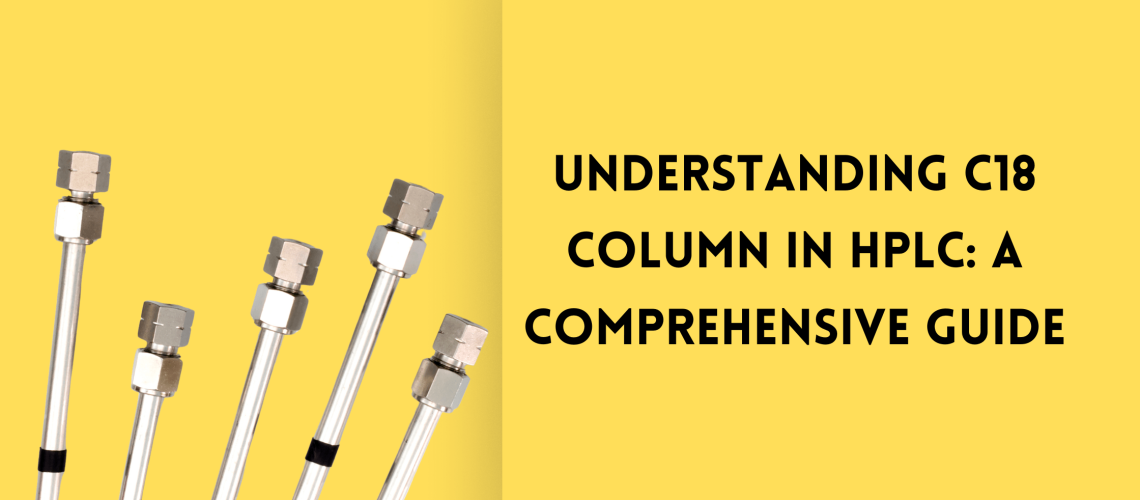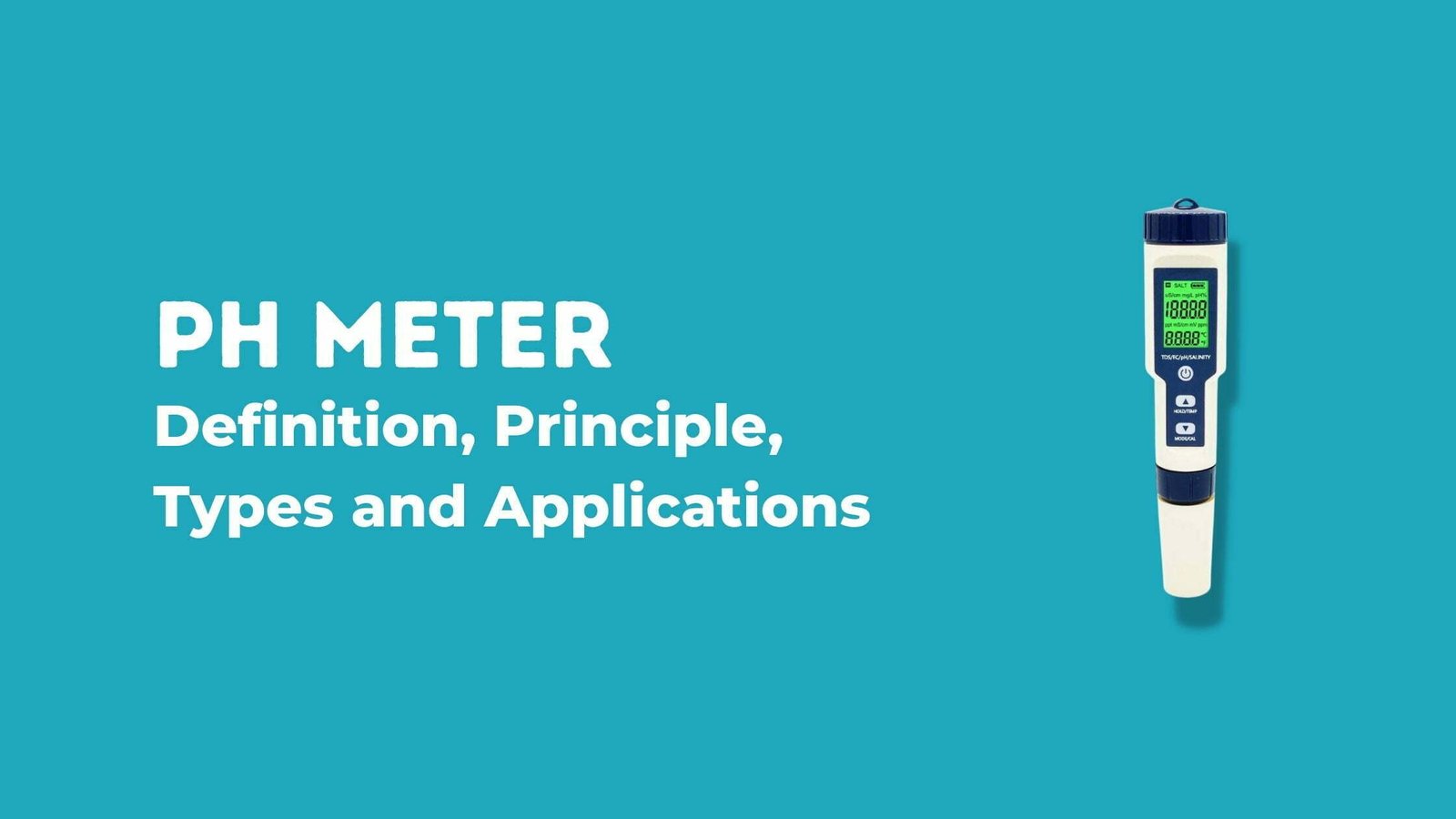In the world of chromatography, C18 column is the most widely used HPLC column and are known for their robustness and versatility across different industries like pharmaceuticals, food safety and environmental sciences. The world of pharmaceuticals have innumerous molecular compounds and the C18 column facilitate the analysis of a wide range of compounds. This article particularly delves into the specifics of C18 columns, exploring their chemical attributes, various types, and their crucial role in analytical chemistry.
The Chemistry Behind C18 Column:
At its core, a C18 column utilizes a C18 stationary phase, often referred to as octadecylsilyl, where C18 denotes an octadecyl alkyl substituent—a straight chain of 18 carbon atoms fully saturated with hydrogen atoms. This configuration gives the column its characteristic non-polar and ionically inert properties under most conditions. In the world of reverse-phase HPLC, C18 columns are the go-to for their ability to engage weak Van Der Waal’s forces, attracting and retaining hydrophobic compounds effectively.

Various Types of C18 Columns:
The versatility of C18 columns stems from their various adaptations to different silica gels. These adaptations influence the pore size, surface area, and even the specific chemical bonding to the silica base, making each C18 column unique.
- Narrow Pore C18 Columns: These are ideal for analyzing small molecules, typically those below 5,000 Da. They feature a pore diameter of 8-12 nm, which excludes larger molecules, enhancing the chromatography of smaller analytes.
- Wide Pore C18 Columns: These are suitable for larger biomolecules, offering greater pore volumes and surface areas for more complex separations.
- Hybrid Silica C18 Columns: These columns blend organic and inorganic components, providing durability and efficiency under low-pressure conditions. Their hybrid nature ensures compatibility with a wide pH range and enhances their longevity.
Specification of C18 Column:
C18 HPLC columns come in various designs, each tailored to specific analytical needs. These variations can include different:
- Particle and Pore Sizes: Affecting the exclusion limits and the interaction dynamics between the analytes and the stationary phase.
- Hydrophobicity Levels: Dictating the retention time and separation efficiency for different compounds.
- Endcapping: Involving the bonding of groups at the end of the silica particles to reduce unwanted interactions with the analytes.
Each specification plays a critical role in the performance of the column and can be selected based on the nature of the sample and the required precision of the analysis.
Why You Need C18 Column: Key Advantages
C18 columns are foundational to High-Performance Liquid Chromatography due to several intrinsic advantages that make them suitable for a broad range of chromatographic needs:
- High Versatility: C18 columns can analyze a wide variety of compounds, making them extremely versatile for multiple industries. Their ability to handle complex samples such as long-chain fatty acids and large biomolecules ensures that they are a first choice for laboratories dealing with diverse analytical requirements. C18 columns are recognized for their hydrophobicity, making them ideal for separating long-chain fatty acids and complex molecules. These columns offer a larger surface area, allowing for more extensive interaction between the mobile phase and the analytes, leading to enhanced separation capabilities. This feature also enables the columns to handle more complex samples, providing clearer peak shapes and reliable results, essential for precise analytical activities.
- Improved Analytical Accuracy: The hydrophobic nature of the C18 column allows for better retention of non-polar compounds, which translates into sharper peak resolutions and more precise separation. This is critical in environments where accuracy and reliability of the results are paramount, such as in pharmaceutical quality control and environmental monitoring.
- Cost Efficiency: The durability and robust performance of C18 columns mean that they can be used for extended periods without a significant loss in efficiency. This durability reduces the need for frequent replacements, providing cost savings over time, especially in high-throughput labs.
- Suitability for a Wide Range of Applications: From drug testing in pharmaceuticals to pollutant analysis in environmental sciences, and food safety verifications, the C18 column’s ability to perform under varied chromatographic conditions makes it a universal tool in analytical chemistry.
- Compatibility with Various Chemical Analyses: Whether it’s basic or acidic compounds, the C18 column can handle a broad pH range, making it adaptable for different chemical analyses. This feature allows for flexibility in method development and optimization.
- Enhanced Performance under Low-Pressure Conditions: With the ability to function efficiently under lower pressures, C18 columns support longer column life and reduced system stress, further enhancing their operational efficiency and reducing maintenance costs.
- Clear and Consistent Results: The structural integrity of C18 columns ensures minimal variability between batches, which is crucial for high stakes testing where consistency and repeatability are required. The clear peak shapes facilitate quicker analysis and interpretation of results.
- Broad Instrument Compatibility: C18 columns are compatible with both newer and older chromatographic systems, which means they can be integrated into virtually any laboratory setup without the need for additional equipment or significant adjustments.
Choosing the Right C18 Column:
Selecting the appropriate C18 column for your analysis is crucial for achieving optimal results. Consider the following factors:
- Analyte Characteristics: Understanding the properties of the compounds you need to analyze will guide you in choosing a column with the right specifications, such as pore size and hydrophobicity.
- Chromatographic Conditions: The conditions under which you will be performing the HPLC analysis, such as the pH and the chemical nature of the mobile phase, can influence the choice of column.
Maintenance Tips for a Healthy C18 Column:
To ensure the longevity and optimal performance of your C18 HPLC column, it’s crucial to adhere to the following maintenance practices:
- Follow Manufacturer Guidelines: Always adhere to the manufacturer’s recommended procedures for storage and cleaning. This ensures that the column maintains its integrity and performance characteristics.
- Regular Flushing: Periodically flush the column with suitable solvents to remove any accumulated impurities. This helps in preventing buildup that can affect the column’s efficiency and lifespan.
- Use of Filters: Incorporate filters in your mobile phase setup to keep out particulates that could clog or contaminate the column, thereby safeguarding against common sources of column degradation.
- pH Range Compliance: Avoid using mobile phases that exceed the column’s recommended pH range to prevent chemical degradation of the bonded phase.
- Proper Storage: When not in use, store the column according to the guidelines provided. Proper storage involves protection from environmental factors and ensuring that the column is kept in a suitable solvent to prevent drying out.
Troubleshooting and Maintaining Your C18 Column:
To ensure optimal performance and extend the lifespan of your C18 HPLC column, regular maintenance and adept troubleshooting are essential. This section provides practical advice for addressing common issues that may arise during the use of your column, helping you navigate through your analytical processes successfully.
Common Issues and Solutions:
- Peak Tailing: Peak tailing refers to a common chromatographic issue where the peaks on a chromatogram appear asymmetrical, with the trailing half of the peak being broader than the leading half. This phenomenon is the opposite of peak fronting. Peak tailing can affect a single peak, several peaks, or all peaks within a chromatogram, and its occurrence is influenced by specific factors related to the chromatographic conditions or setup.
Possible Causes:
- Sample overload
- Contaminated mobile phase
- Degraded column
Solutions:
- Reduce Injection Volume: Lowering the amount of sample injected can help minimize tailing effects.
- Filter or Replace Mobile Phase: Ensure the mobile phase is pure to avoid introducing contaminants that can cause tailing.
- Flush the Column: Regular flushing with an appropriate solvent can help remove build-up and rejuvenate the column.
- Loss of Resolution:
Possible Causes:
- Worn-out column
- Inappropriate mobile phase composition
- Incorrect pH settings
Solutions:
- Replace the Column: If wear and tear are evident, replacing the column might be necessary.
- Optimize Mobile Phase Composition and pH: Adjust the mobile phase to match the specific requirements of your analysis and ensure pH is within the recommended range.
- Ensure Compatibility with Column Specifications: Double-check that all operating conditions align with the column’s specifications.
- High Backpressure
Possible Causes:
- Blocked frit
- Contaminated column
- Excessively high flow rate
Solutions:
- Clean or Replace the Frit: Check and clean the frit for obstructions or replace it if necessary.
- Flush the Column: Use appropriate solvents to clear any internal blockages.
- Reduce Flow Rate: Decreasing the flow rate can reduce pressure and prevent damage to the column.
- Ghost Peaks
Possible Causes:
- Residual contamination from previous injections
- Leaks in the chromatographic system
Solutions:
- Perform Blank Injections: Run blank injections to help clear the system of lingering contaminants.
Identify and Fix Leaks: Inspect the system for any leaks and repair them to prevent contaminants from entering the system.
When to Replace Your C18 Column: Recognizing the Signs.
Despite best maintenance practices, a time comes when a C18 column must be replaced to maintain the quality of your chromatographic results. Here are key indicators that signify it might be time to replace your column:
- Loss of Resolution: If you notice a significant decrease in resolution or an increase in peak asymmetry that calibration and maintenance cannot correct, it might be time for a new column.
- Increased Backpressure: A persistent increase in backpressure, even after thorough cleaning, suggests internal blockages or damage that likely warrants a replacement.
- Persistent Ghost Peaks: Continued appearance of ghost peaks, despite rigorous cleaning efforts, can indicate irreversible contamination or damage to the column’s stationary phase.
- Physical Damage: Any visible damage to the column, such as cracks or chips, is a clear sign that the column needs to be replaced to ensure the integrity and safety of your analyses.
Proper column maintenance and timely replacement are essential for ensuring consistent, reliable analytical results in chromatography. Recognizing and responding to the signs of column wear and tear will help maintain the quality and efficiency of your HPLC operations.
Latest innovations/advances in C8 Column:
The latest innovations in C18 HPLC columns show significant advancements in technology and applications. Here are some notable developments:
Advanced Bonding Technologies and Surface Treatments: Companies like Avantor have developed Hichrom C18 columns that use ultra-pure silica with advanced bonding technologies. This approach enhances column robustness and reproducibility, effectively minimizing interactions between the silica surface and analytes, which can degrade performance. These columns demonstrate high stability across a broad pH range, which is crucial for maintaining performance throughout the column’s lifetime.
Polar Embedded Groups: The KNAUER ProntoSIL C18 ace-EPS columns feature polar embedded amide groups, which adjust the retention behaviors of compounds based on their interaction with the embedded polar group. This design results in higher retention of acidic compounds and slightly reduced retention of basic compounds compared to traditional C18 columns. Such columns are particularly useful in the pharmaceutical industry where many analytes have acidic or basic groups.
Core-Shell Technology: Fortis Technologies has developed SpeedCore, a core-shell technology for HPLC and UHPLC columns. These columns are designed to offer enhanced efficiency, speed, and resolution of analysis. The use of small particle sizes (as low as 1.7µ particles for UHPLC applications) in these columns leads to ultra-high efficiency separations, which is advantageous for complex analytical tasks.
New-Generation Silica Adsorbents: Vydac Denali C18 columns use a new-generation silica-based 120 Å monomeric C18 adsorbent. This new technology enhances C18 surface coverage and deactivates residual silanol groups, which improves the column’s overall performance and longevity.
Conclusion: The Integral Role of C18 Columns in HPLC
C18 HPLC columns with their robust design and adaptable features, facilitate the detailed and accurate analysis of complex mixtures, crucial for quality control, environmental monitoring, and the development of pharmaceuticals. Understanding the various types and specifications of C18 columns will empower you to select the most suitable column for your analytical needs, ensuring high precision and reliability in your chromatographic separations.



